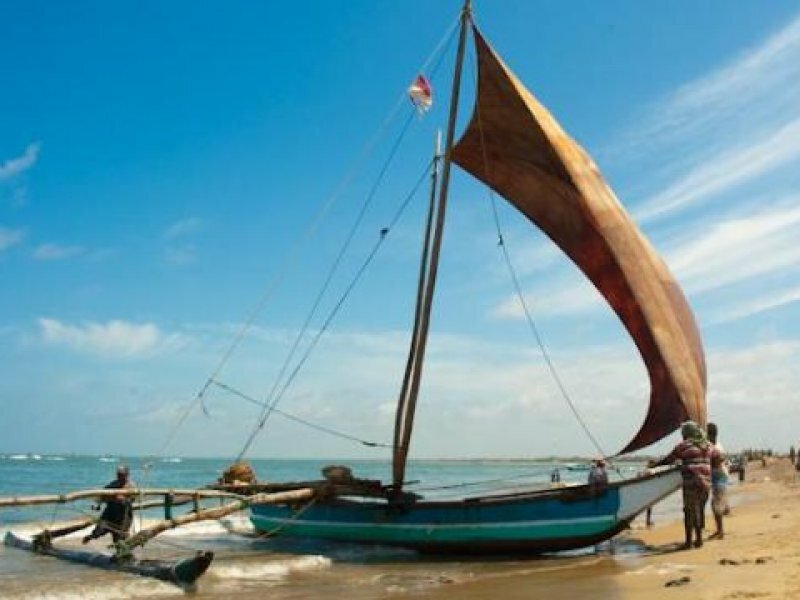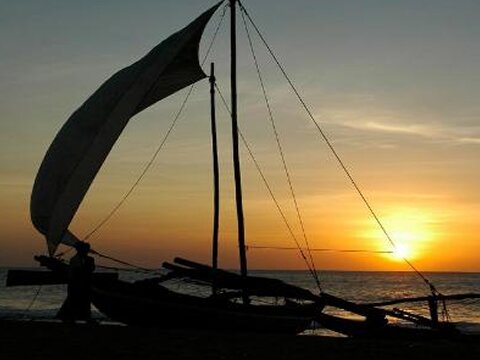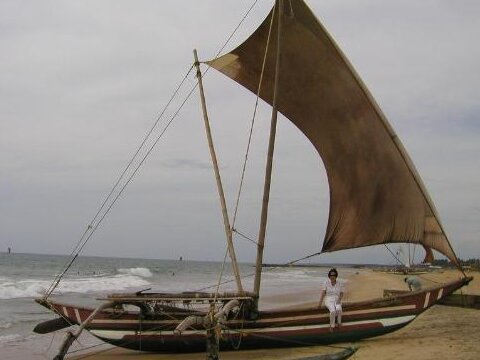Visit a shipyard
Negombo is the place to go if you want to find shipyards for oruwas. Until twenty years ago the oruwa was made out of a single log, usually from the so called “jack-wood” (Artocarpus heterophyllus). This wood was so durable that a single dugout canoe would last up to forty years.
They were made by specialised carpenters in the various villages around Negombe. The jack wood trees also produce the jack-fruit in April-June and September- October, the worlds largest fruit and considered the king of Sri Lankan fruits. Partly to protect the fruit trees it became more and more difficult to find the big logs required for the main hull. All new oru are today made from fibreglass and polyester resin (FRP).
The fishermen find this advantageous because of lighter weight and lower maintenance cost. Small repairs on the boats, whether wooden or FRP, are usually done on the beach.
,Oruwa more cost effective for the fishermen´
“The Government regulation to reserve certain fishing grounds in Negombo for sailing craft only has been a very wise move and the main reason why the sailing oruwa still exists. This could be extended to other near shore fishing grounds in order to promote the use of sail and save the fishermen the expenses of an engine and fuel. There are thousands of small paddling and rowing oru that fish close to the coast.
For this fishery there is no better alternative. The oru is also a safe boat provided the fibreglass version is fitted with buoyancy tanks. Most of the accidents that happen at sea in Sri Lanka are with motorized boats. Their engine breaks down when they are far at sea and, without an emergency sail, they do not manage to come back to shore.
For inshore fishery, the most common boat in Sri Lanka is now a 19 ft western type fibreglass boat using an outboard engine running on subsidized kerosene fuel. Trials have shown that a modern outrigger canoe, with the same 8 Hp and 12 Hp outboard engines, had a higher speed and 25 % less fuel consumption per nautical mile than the 19 ft boat presently used.
The outrigger canoe fitted with a small diesel engine had a fuel saving fuel saving of 50%. With the expected high fuel prices of the future, a modernized version of the oru should be given a high priority. ”






